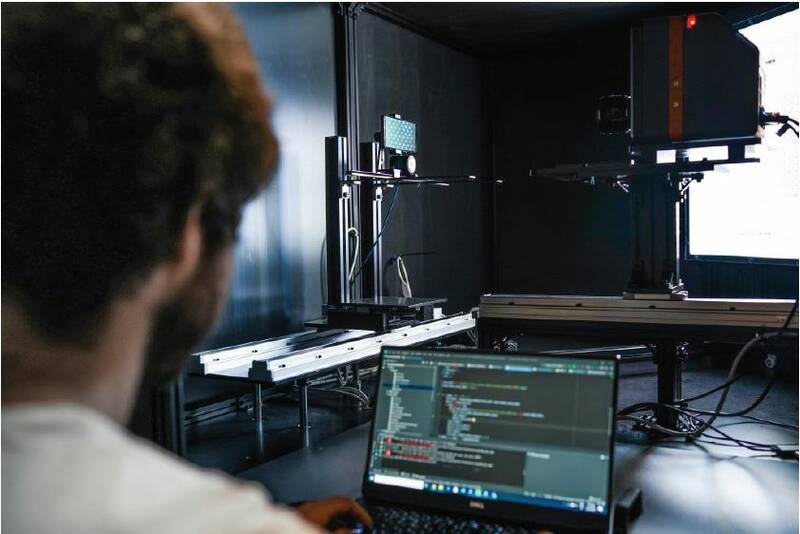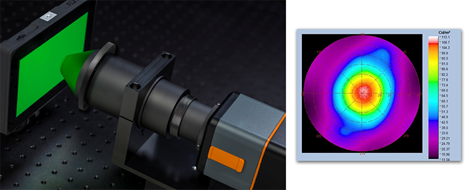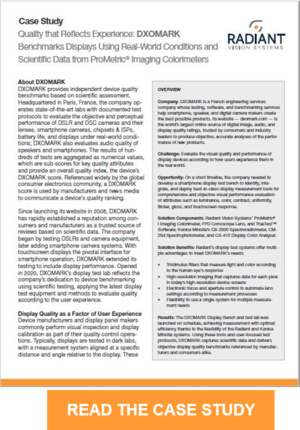Benchmarking Display Quality for the Real World
It’s hard to remember a time before everyone had a mobile phone in their pocket or purse. For members of the millennial generation and younger, personal devices have always been a part of life. Today, more than 2.71 billion people around the globe own a smartphone.1
An omnipresent part of daily activity, display devices are used in almost every type of environment, under every imaginable ambient lighting condition, and viewed at variable distances and angles. At this very moment, someone is scrolling through their phone in a darkened bedroom, using on-screen navigation to find their way through sun-drenched streets, working in the artificial light of an office, and texting friends under the flashing digital signage of a modern metropolis.

Just a few of the real-world situations where people use smartphones for work and daily activities.
Device manufacturers need to ensure that display performance meets user expectations under all real-world scenarios. Visual inspection is a standard part of the quality control process for display products; both device manufacturers and display panel makers commonly perform inspections and display calibrations to ensure the visual performance of their devices.
However, testing during design and production operations is typically performed in dark labs and fixtures, with a measurement system aligned at a specific distance and angle relative to the display. These settings limit the effects of variables like ambient light, view angle, and focus. The display is isolated—which makes it easier to characterize its brightness, color, and other visual qualities—but users rarely view their smartphones or mobile devices under such optimal conditions.
French engineering services company DXOMARK has taken up the challenge of quality benchmarking display products under field conditions. Known as the world’s largest online source of digital image, audio, and display quality ratings, DXOMARK has long been trusted by consumers and industry leaders to produce objective, accurate analyses of the performance of new products—as they are actually used in real life.
Evaluating User Experience of Display Devices
DXOMARK recently developed a new Display Bench system that enables it to evaluate the visual quality and performance of smartphone devices according to how users experience them. While manufacturer testing measures specifications of the display itself, the new Display Bench and test lab enables DXOMARK to make an objective evaluation of display quality under real-world conditions.
To accomplish this goal, DXOMARK selected best-in-class components to construct a test system that can provide comprehensive display performance evaluation by assessing attributes such as luminance, color, contrast, uniformity, flicker, gloss, and touchscreen response. The Display Bench solution incorporates a ProMetric® I Imaging Colorimeter, FPD Conoscope Lens, and TrueTest™ Software from Radiant Vision Systems, with the CS-2000 Spectroradiometer, CM-25d Spectrophotometer, and CA-410 Display Color Analyzer from Konica Minolta. Using these tools and user-focused test protocols, DXOMARK captures scientific data to deliver objective display quality benchmarks that are referenced by manufacturers and consumers alike.

Inside DXOMARK’s Display Bench, featuring a Radiant ProMetric I Imaging Colorimeter, multi-axis robotic mounting equipment, and LED array to emulate ambient lighting in device use-case scenarios. Image courtesy of DXOMARK.
Key attributes of Radiant’s ProMetric imaging systems include:
- Tristimulus filters that measure light and color according to the human eye’s response
- High-resolution imaging that captures data for each pixel in today’s high-resolution device screens
- Electronic focus and aperture control to automate lens settings according to measurement processes
- Flexibility to use a single system for multiple measurement needs

As applied in DXOMARK’s test lab, Radiant Vision Systems FPD Conoscope Lens measures the view angle performance of a display (left), providing a polar plot of luminance as seen across angles to ±70° (right).
Case Study: Smartphone Display Testing
To learn more, read the Case Study “Quality that Reflects Experience: DXOMARK Benchmarks Displays Using Real-World Conditions and Scientific Data from ProMetric® Imaging Colorimeters”, which describes how DXOMARK incorporated Radiant hardware and software products into the Display Bench to evaluate displays as they are actually used. In the case study, you will learn:
- How Radiant's display test and measurement equipment is built into DXOMARK's fully automated Display Bench to ensure objective, repeatable, and comprehensive testing
- How DXOMARK accomplishes user-centric display testing with the help of ProMetric I Imaging Colorimeters and built-in tristimulus filters that replicate human visual response
- How the flexibility of Radiant's systems allows DXOMARK to meet multiple display test needs with a single system

CITATION
- Metev, D., “39 Smartphone Statistics You Should Know in 2020”, reporting on statistics from Data Reportal on Review42.com, updated February 18, 2021. (Retrieved April 1, 2021).
Join Mailing List
Stay up to date on our latest products, blog content, and events.
Join our Mailing List
